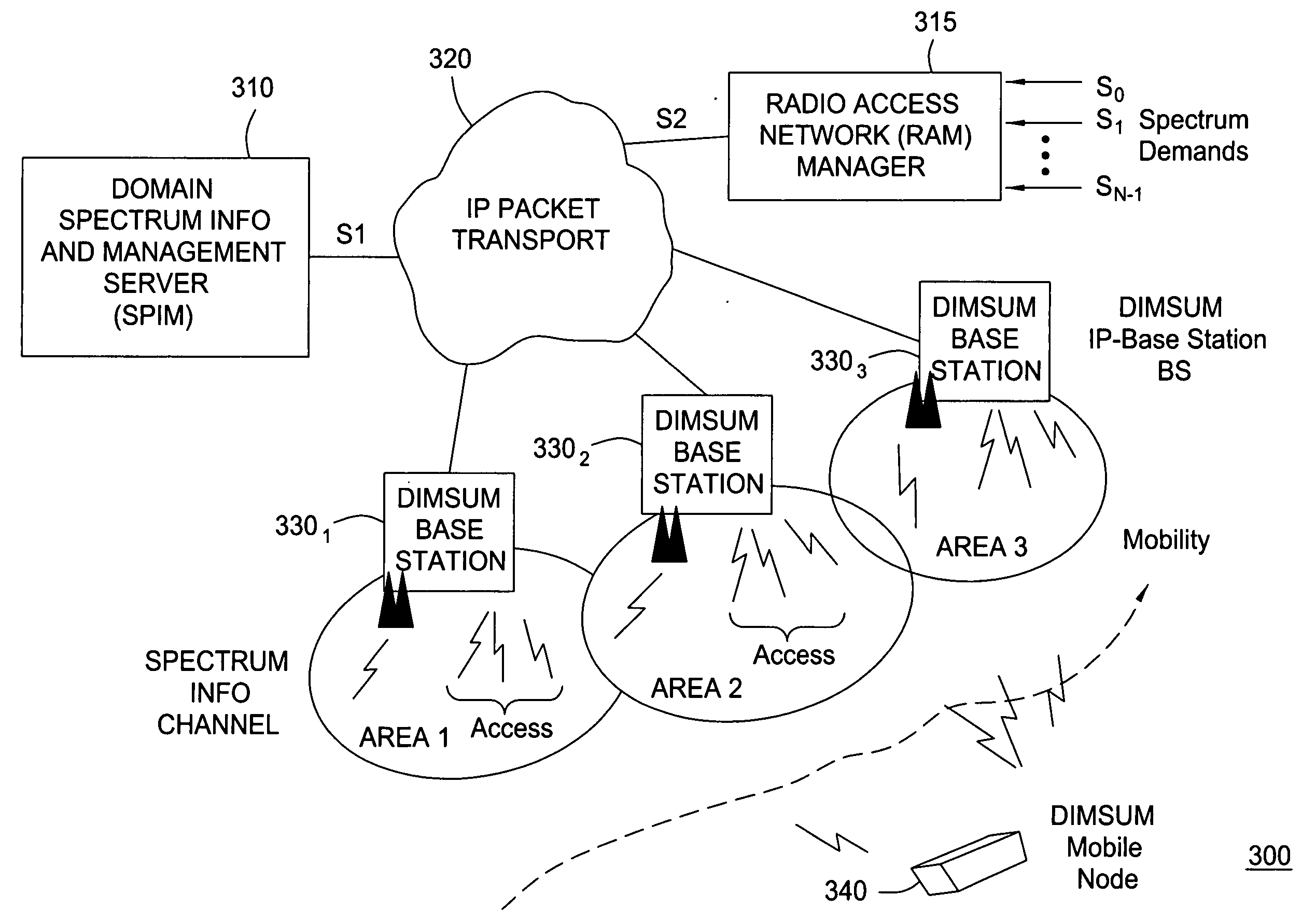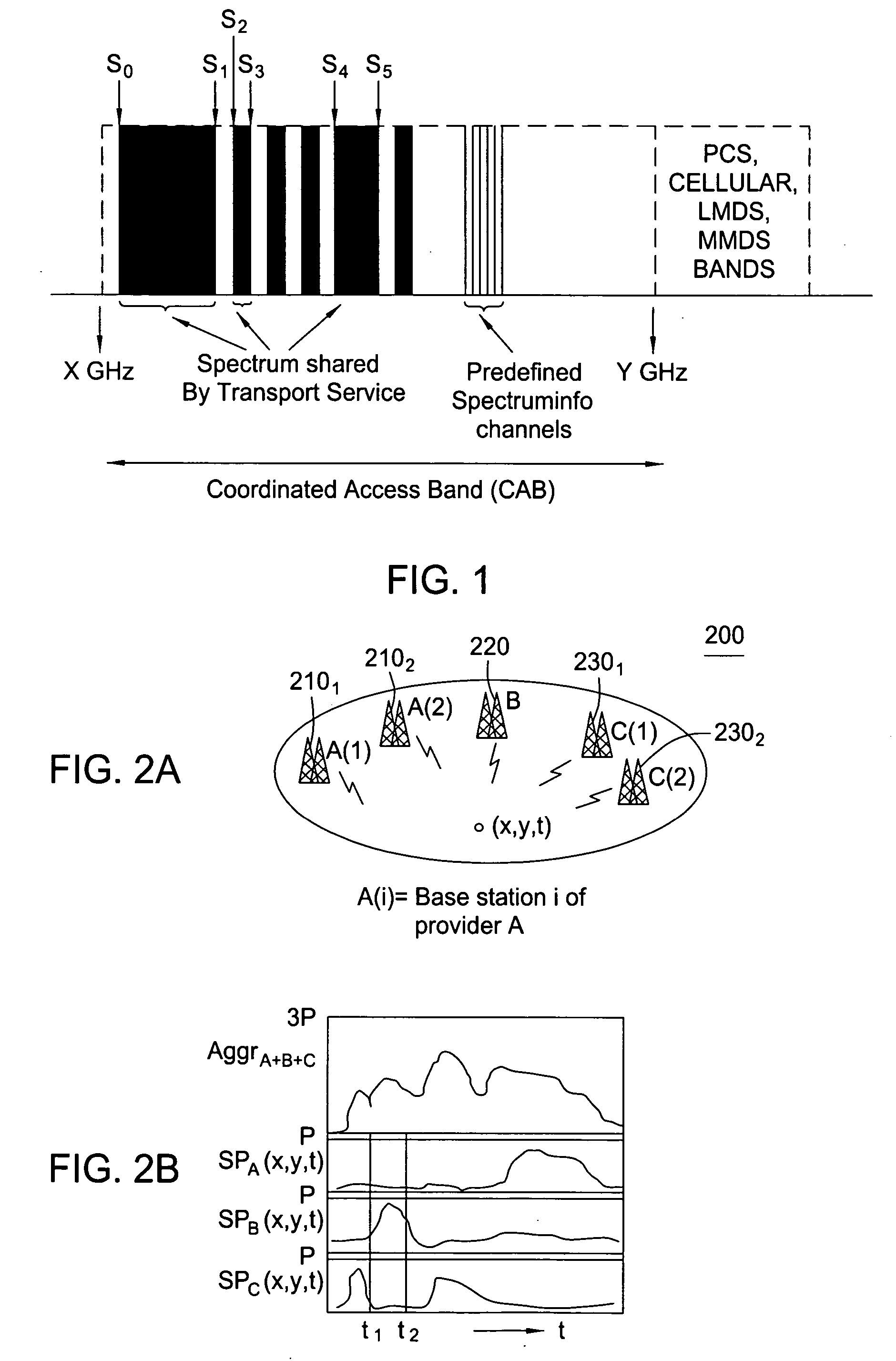Method and system for wireless networking using coordinated dynamic spectrum access
a dynamic spectrum and wireless networking technology, applied in the field of wireless communication, can solve the problems of artificial spectrum scarcity, large part of allocated spectrum is highly underutilized, poor network guarantee,
- Summary
- Abstract
- Description
- Claims
- Application Information
AI Technical Summary
Problems solved by technology
Method used
Image
Examples
Embodiment Construction
[0027] The present invention advantageously provides a method and system for wireless networking implementing the concept of a coordinated access band (CAB) and the dynamic allocation of the spectrum within the CAB to participating requesting clients. Although various embodiments of the present invention are described herein with respect to a DIMSUNnet network comprising a specific number of clients and base stations, the specific embodiments of the present invention should not be treated as limiting the scope of the invention. It will be appreciated by those skilled in the art and informed by the teachings of the present invention that the concepts of the present invention may be applied in many other network architectures comprising substantially any numbers of clients and base stations for the dynamic allocation of available spectrum.
[0028] The FCC Spectrum Policy Task recommends three methods to improve spectrum utilization: (1) improve access through time, frequency, and space...
PUM
 Login to View More
Login to View More Abstract
Description
Claims
Application Information
 Login to View More
Login to View More - R&D
- Intellectual Property
- Life Sciences
- Materials
- Tech Scout
- Unparalleled Data Quality
- Higher Quality Content
- 60% Fewer Hallucinations
Browse by: Latest US Patents, China's latest patents, Technical Efficacy Thesaurus, Application Domain, Technology Topic, Popular Technical Reports.
© 2025 PatSnap. All rights reserved.Legal|Privacy policy|Modern Slavery Act Transparency Statement|Sitemap|About US| Contact US: help@patsnap.com



